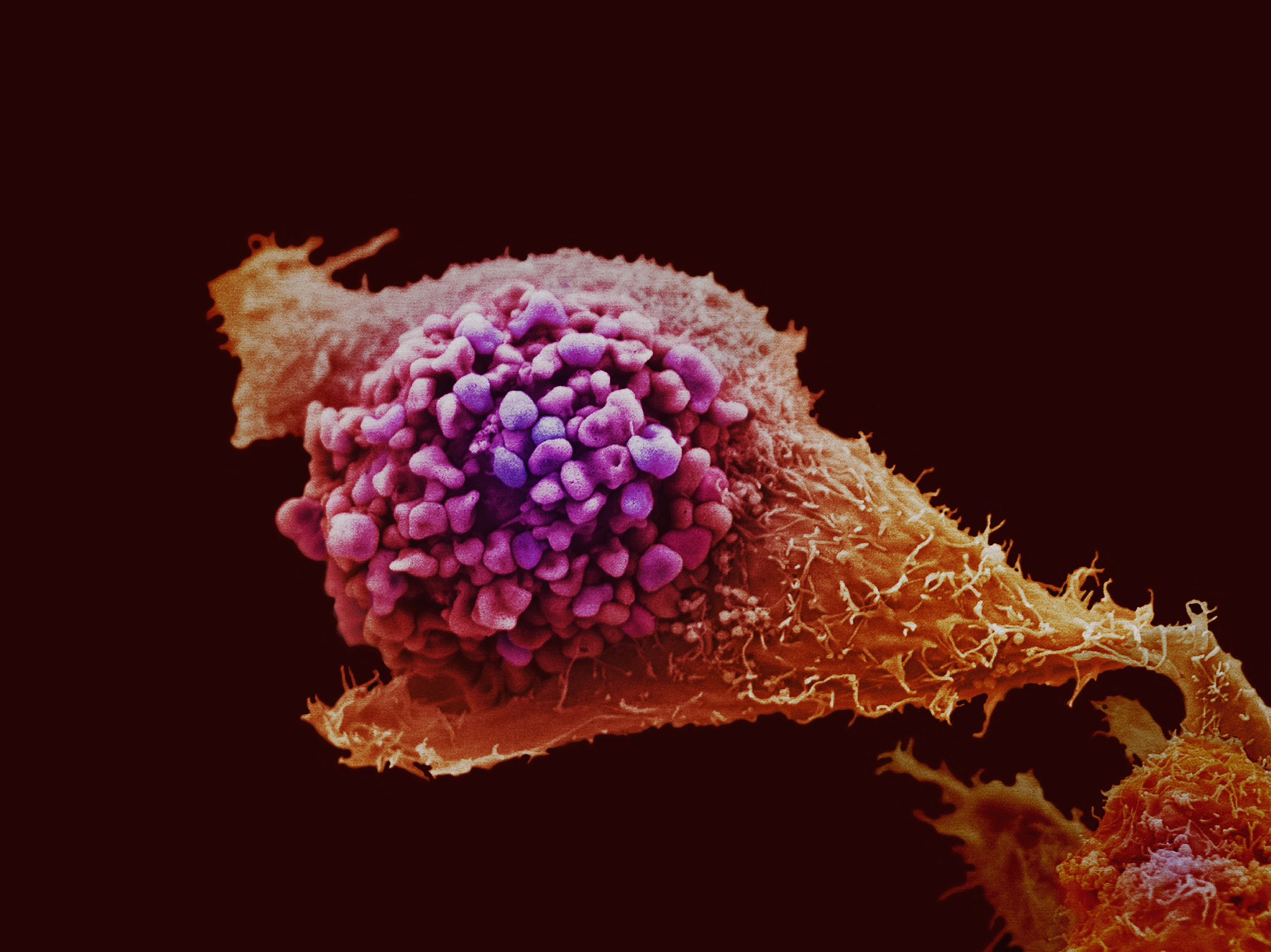A molecular magic bullet could hold the key to selectively deleting cancer cells from the body, a new study has shown. Writing in PNAS, California Institute of Technology researcher Niles Pierce and his colleagues describe how they have developed a new breed of intelligent smart bombs that can penetrate cells but then only "detonate" if a cell is cancerous. 
The technique makes use of short pieces of genetic material called small conditional RNAs. These molecules consist of two linked components, a "diagnostic" detection sequence, which probes the genes inside a cell for a predetermined tell-tale cancer sequence, and a therapeutic tail structure which, if activated by the diagnostic component locating its target cancer-specific gene sequence, triggers the cells to self-destruct. The technique works by fooling cancerous cells into thinking they been infected by a virus so that they activate an enzyme called PKR, which destroys the cell to prevent the imaginary virus from spreading. This occurs because when the diagnostic component of the conditional RNA identifies its genetic target, it triggers the "therapeutic" component to unwind itself and begin to join up with the therapeutic tails of other conditional RNA molecules producing double stranded RNA, which is usually only found in virally-infected cells. The team tested their anti-cancer bullets against four different cultured human cancer cell lines and were able to achieve between 20 and 100 fold reductions in the cancer cell populations.
If the approach can be successfully translated to patients it will provide a powerful way to selectively remove cancerous cells, including those that have spread (metastasised) around the body, whilst sparing patients the unpleasant side effects associated with current chemotherapy regimes.










Comments
Add a comment